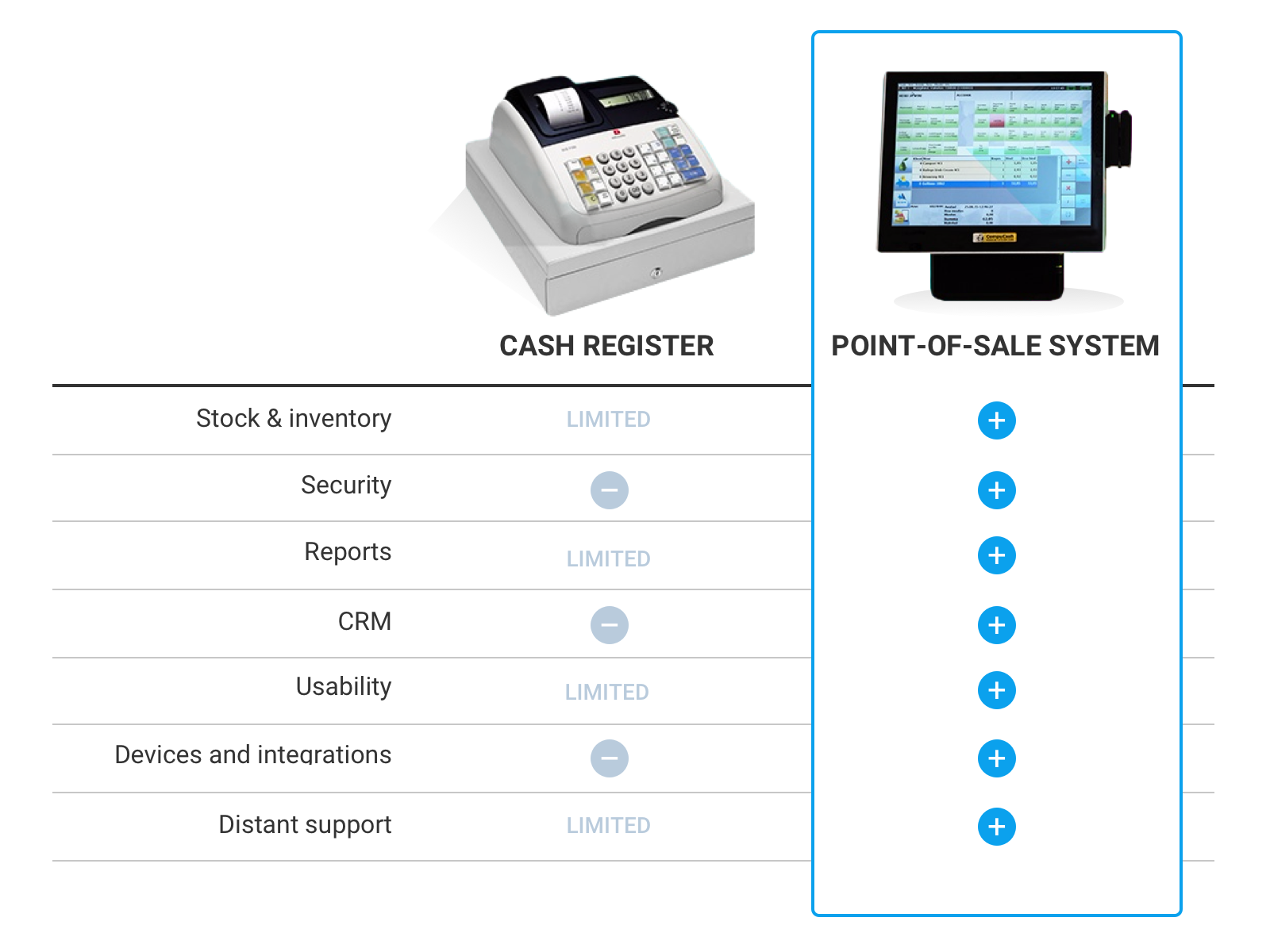No shop or restaurant owner can nowadays manage without a sales maintenance solution, be it a cash register or point-of-sale system (POS system).
We are often asked, what are the main differences between a point-of-sale system and cash register. Before going deep into these differences, let’s shortly tell about the terminology.
Cash register
It is a device with basic functionality to maintain sales, calculate value added tax, print a cheque, store cash and produce elementary sales reports.
Newer versions of cash registers also can be integrated with a payment terminal and barcode reader. Modern cash registers have also got a SD-card input to save data and read reports and small digital display to show the sum to be paid by the client.
The main advantages of a cash register is its long life-cycle (10+ years) and favourable price (starting from 200 euros).
Point-of-sale system
A point-of-sale system has got all the functionality of a cash register but it can do much more, gives a better user experience and offers several additional possibilities.
It is worth to mention here that the point-of-sale systems can be divided into classical and mobile ones. The classical ones we are used to see in shops, sports clubs and for example theatre ticket offices then mobile ones in a phone or tablet can be used everywhere with internet access. Mobile point-of-sale solutions can we see more and more in cafes and restaurants.
It is important to know that mobile point-of-sale systems are mostly sold with a monthly fee which means that you do not have to make a larger initial payment to buy the system. In case of the classical point-of-sale both price models are used, purchase, monthly fee and combinations.
Point-of-sale systems have many advantages: starting from a powerful analytics that give good basis for batter management decisions, ending with marketing and sales solutions enabling you to increase sales.
Main differences between a cash register and point-of-sale system

1. Storage management
Most of the cash registers do not have an option for storage management. In the end of a day one can see how many products were sold but that is mostly it.
But a point-of-sale systems have usually a strong storage management module. For example in catering business it enables to have an online overview of the components used in recipes and see cost calculations. A point-of-sale system also allows you to get notifications about the need to order additional supplies and goods.
2. Security
A cash register does not give security to a owner as it does not offer any control functionalities.
A point-of-sale system is able to log activities happening in a point-of-sale, create different user rights and restrictions and even integrate it with a video surveillance system. It is all useful to increase your control of your business.
3. Reports
Cash registers are mostly able to print you a daily sales report. More expensive ones allow you also to see reports sorted by products. To get an overview of the sales in previous days can be impossible or take a lot of time.
Point-of-sale systems allow you to find out different purchase patterns and see reports sorted by invoices, products, ways of payment, sales people or campaigns.
4. Loyal customer management
Cash register does not offer an option to store your loyal customer data, see their purchase history and make special offers.
Point-of-sale system includes a CRM-module that gives exact information about your loyal customers and allows you to create targeted campaigns. A great advantage in Estonia is an option to integrate your loyalty card with the person’s ID-card.
5. Usability
Cash registered are usually made to work with identifying a product with its concrete number code. This means that a sales person has to know these numbers by heart of have them written down next to the cash register.
Point-of-sale system makes it possible to create buttons to the screen for different product groups, products and actions. A sales person can use a touch screen to click on the product names and this makes the sales very quick and easy.
6. Additional devices and integrations
Payment terminals, colourful client displays, barcode readers, kitchen displays – these are just some of the devices that can be connected to your point-of-sale system and that make your everyday work smoother.
It is also possible to integrate video surveillance, booking-keeping software, work time management solutions and e-shops with your point-of-sale system.
Cash registers mostly do not allow such integrations.
7. Distant support
One important component of a point-of-sale system is a well-functioning client support, also in the distant form. It makes it possible to solve your problems and challenges quickly and smoothly.
Very few of cash register companies offer you a support service, and none do it 24/7.
Interested in CompuCash: find out more or call us.
